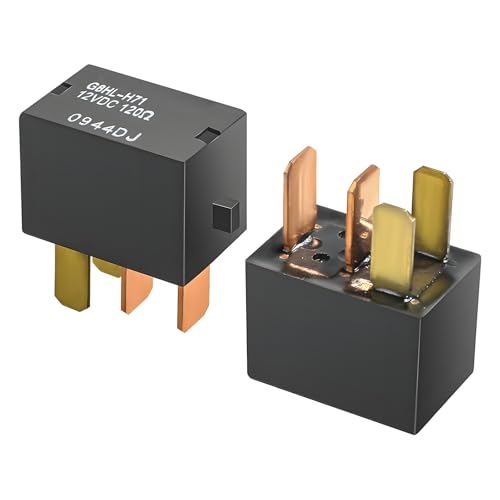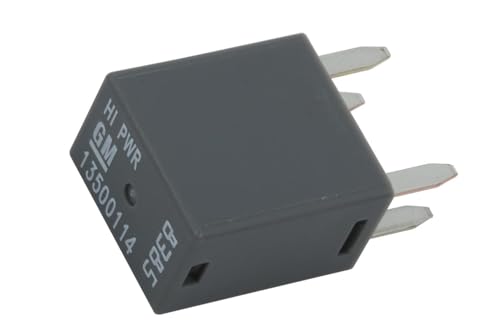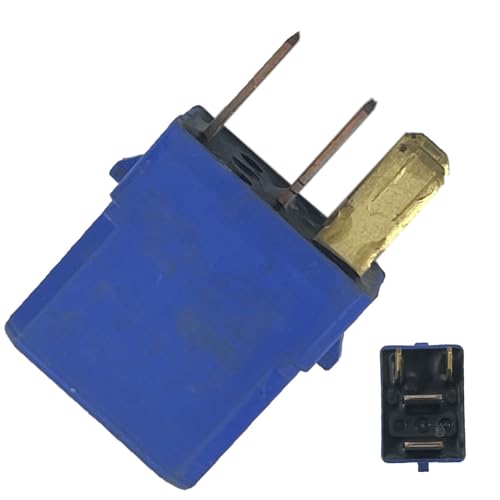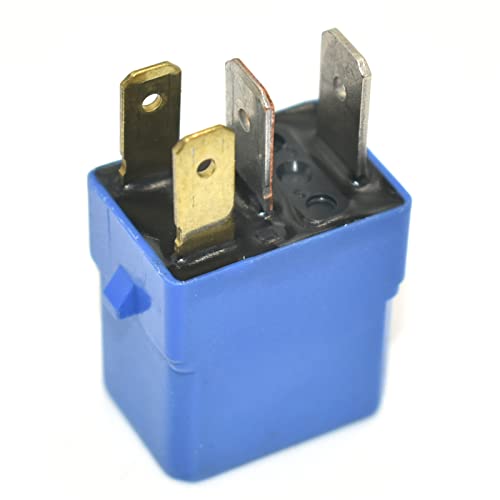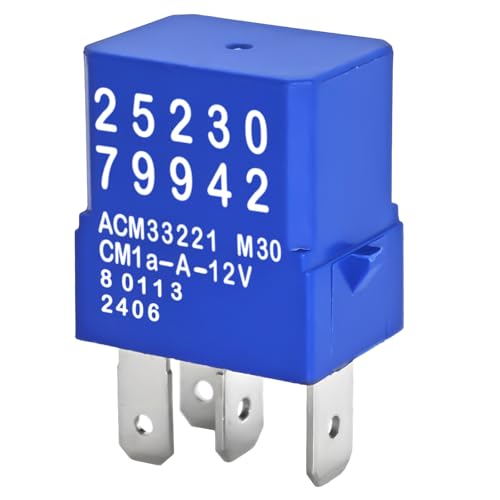Ever wondered what magic happens behind the dash when you turn on your car’s fan? A tiny, powerful switch is the star of the show. If your car’s climate control system has suddenly stopped working, leaving you too hot or too cold, you’re likely facing a frustrating diagnostic puzzle. The problem could be a simple, inexpensive component that acts as the gatekeeper for your comfort.
The blower motor relay is an essential electromagnetic switch in your car’s HVAC system that controls the powerful blower motor, allowing your heating, A/C, and defrost systems to circulate air. It’s the unsung hero that safely manages the heavy electrical load required to push air through your vents.
Leveraging extensive analysis of automotive electrical systems and established diagnostic patterns, this guide unpacks everything you need to know about the blower motor relay. We will explore its exact function, the clear symptoms of failure, and how to confidently distinguish a bad relay from other common culprits. This guide will help you effectively navigate this common automotive issue and understand precisely what the blower motor relay does in a car.
Key Facts
- It’s a High-Current Manager: A key function of the blower motor relay is to use a small, low-current signal from your dashboard switch to manage a much larger, high-current circuit. This protects the delicate controls from the heavy power draw of the blower motor.
- Complete Fan Failure is the #1 Symptom: Unlike other HVAC components, a completely failed blower motor relay typically results in the fan not working on any speed, as established by numerous diagnostic reports.
- Electromagnetism is the Principle: The relay works using a simple but effective electromagnetic coil. When energized, it creates a magnetic field that closes a high-power switch, completing the circuit to the fan motor.
- It Can Cause Secondary Problems: Evidence suggests a faulty relay can short out internally, creating electrical spikes that repeatedly blow the blower motor fuse, making it a prime suspect if you’re experiencing this issue.
- It’s Different From a Resistor: A bad relay causes a total loss of fan function. In contrast, a bad blower motor resistor classically causes the fan to work only on its highest speed setting, a critical distinction for accurate diagnosis.
What Does the Blower Motor Relay Do in a Car? A Detailed Breakdown
A blower motor relay acts as a remote-controlled switch, using a small electrical signal from your dash controls to manage the large amount of electrical current needed to power the blower motor. This small part is absolutely critical for the operation of your vehicle’s heating, ventilation, and air conditioning (HVAC) system. Without it, you would have no airflow for heating, cooling, or defrosting your windows.
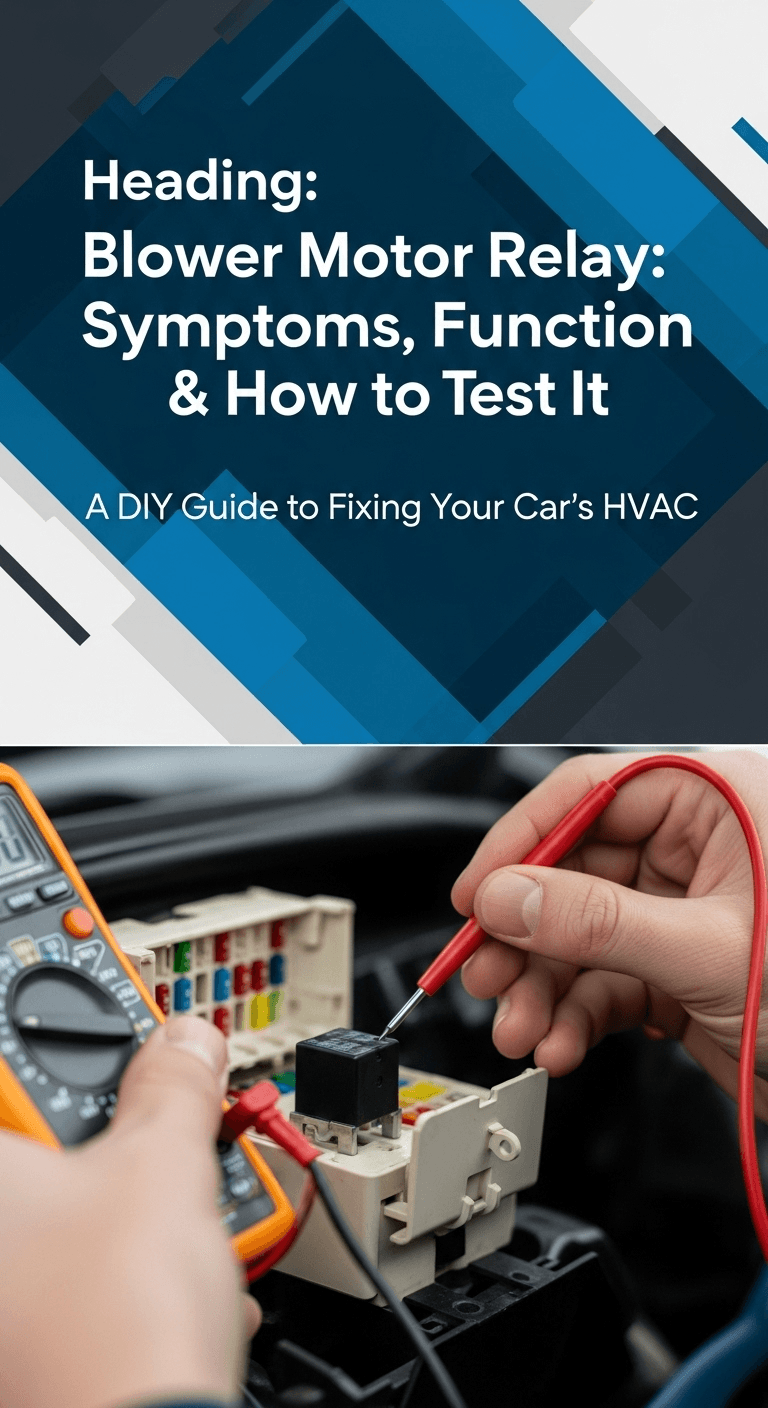
Think of the relay as a bodyguard for your delicate dashboard switches, taking the heavy electrical hit so the switches don’t have to. Here’s a deeper look at its essential functions based on how automotive electrical systems are designed.
- Controls Blower Motor Operation: The most fundamental job of the what does the blower motor relay do in a car is to control the on/off state of the blower motor itself. When your car’s HVAC control module or thermostat signals a need for air circulation, it sends a low-power electrical signal directly to the relay. This signal activates the relay, which in turn powers up the fan motor.
- Regulates High-Current Power: The blower motor that pushes air through your vents is a high-draw component, requiring a significant amount of amperage to run. Your fan speed switch or climate control panel isn’t built to handle this much current directly. The relay acts as a safe intermediary, allowing the low-current switch to safely control the high-current circuit that runs the motor.
- Protects HVAC System Circuitry: The blower motor relay is a key part of a protected circuit. It works in tandem with a specific fuse. In the event of a power surge or an excessive current draw from a failing motor, the fuse is designed to blow first. This action interrupts the circuit, protecting the relay, the motor, and other sensitive electronic components from catastrophic damage. This protective role is vital for the longevity of your entire HVAC system.
How the Relay Works: An Electromagnetic Switch in Action
When you turn on the fan, a small current energizes an internal electromagnet, which pulls a switch closed, allowing a powerful current from the battery to run the blower motor. The inner workings are a brilliant piece of simple physics. It works just like a drawbridge operator (the signal) lowering a bridge (the contacts) to let heavy traffic (the high current) flow to the city (the blower motor).
Here is the step-by-step sequence of how it operates:
- Activation Signal: You turn the fan dial or press a button on your climate control panel. This sends a very small electrical current from the control system to the relay’s primary trigger terminals.
- Electromagnetic Coil: This low-power current flows into a tiny coil of wire wrapped around a soft iron core inside the relay. This instantly turns the iron core into a powerful electromagnet.
- Contact Closure: The magnetic field generated by the coil physically pulls a metal arm, called an armature, towards it. This action forces a set of high-amperage electrical contacts together, closing the secondary, load-carrying circuit.
- Power to Blower Motor: With the contacts now touching, a path is created for the high-current power from the car’s battery to flow through the relay and directly to the blower motor. The motor spins up, and you feel air coming from your vents.
- Deactivation: When you turn the fan off, the small electrical signal to the coil is cut. The electromagnet switches off, the magnetic field collapses, and a small spring pulls the contacts apart, instantly breaking the circuit and stopping the blower motor.
6 Symptoms of a Bad or Failing Blower Motor Relay
Diagnosing a failing blower motor relay is often straightforward because its failure modes are quite distinct. If you’re experiencing issues with your car’s fan, check to see if any of these common symptoms apply.
The most common symptoms of a bad blower motor relay include the blower motor not working at all, working only intermittently, or repeatedly blowing its fuse.
Quick Fact: A faulty relay can sometimes cause the blower motor fuse to blow repeatedly. If you’re replacing fuses and they keep failing, the relay is a prime suspect.
- Blower Motor is Completely Non-Functional
This is the most definitive symptom. You turn the fan knob or press the button, and nothing happens on any speed setting. This indicates the relay has likely failed in the “open” position, preventing any power from reaching the motor. - Blower Motor Works Intermittently
The fan might work one minute and not the next. You might hit a bump, and it suddenly kicks on or off. This points to a relay with failing internal connections or contacts that can no longer maintain a consistent circuit. - Blower Does Not Run on Higher Settings
While less common than a total failure, some vehicle designs route power for the highest fan speed directly through the relay. In these specific cases, a faulty relay might cause only the highest setting to fail while lower speeds (which run through the resistor) still work. - Blower Motor Changes Speeds Unexpectedly
The fan may be running fine and then suddenly drop to a lower speed or shut off entirely without you touching the controls. This suggests an unstable connection within the relay that cannot sustain the required current load. - Repeatedly Blown Fuses
A relay that is shorting out internally can draw excessive current, causing the protective fuse to blow as soon as you try to turn the fan on. This is a clear sign that a component in the circuit has a serious electrical fault. - Melted Relay or Connector
In severe cases of failure, a relay can overheat due to high resistance from corroded or burnt internal contacts. This can cause the plastic housing of the relay and its connector in the fuse box to melt or show signs of scorching, a very clear indicator of a critical failure.
Is It the Relay or the Blower Motor Resistor? How to Tell the Difference
If your fan doesn’t work on any speed, the relay is the likely culprit. If it only works on the highest speed setting, the blower motor resistor is the more probable cause. This is one of the most common points of confusion for DIY diagnosis. Both parts are in the same system, but they have very different jobs and fail in different ways.
Here’s the key question to ask yourself: Does your fan work on any speed? If the answer is ‘no,’ suspect the relay. If it only works on the highest setting, suspect the resistor.
This table breaks down the difference for absolute clarity:
| Component | Primary Function | Common Failure Symptom |
|---|---|---|
| Blower Motor Relay | Acts as an on/off power switch for the entire blower motor circuit. | The fan does not work on any speed setting at all. |
| Blower Motor Resistor | Varies electrical resistance to control fan speed at lower settings. | The fan only works on the highest speed setting and not on any lower ones. |
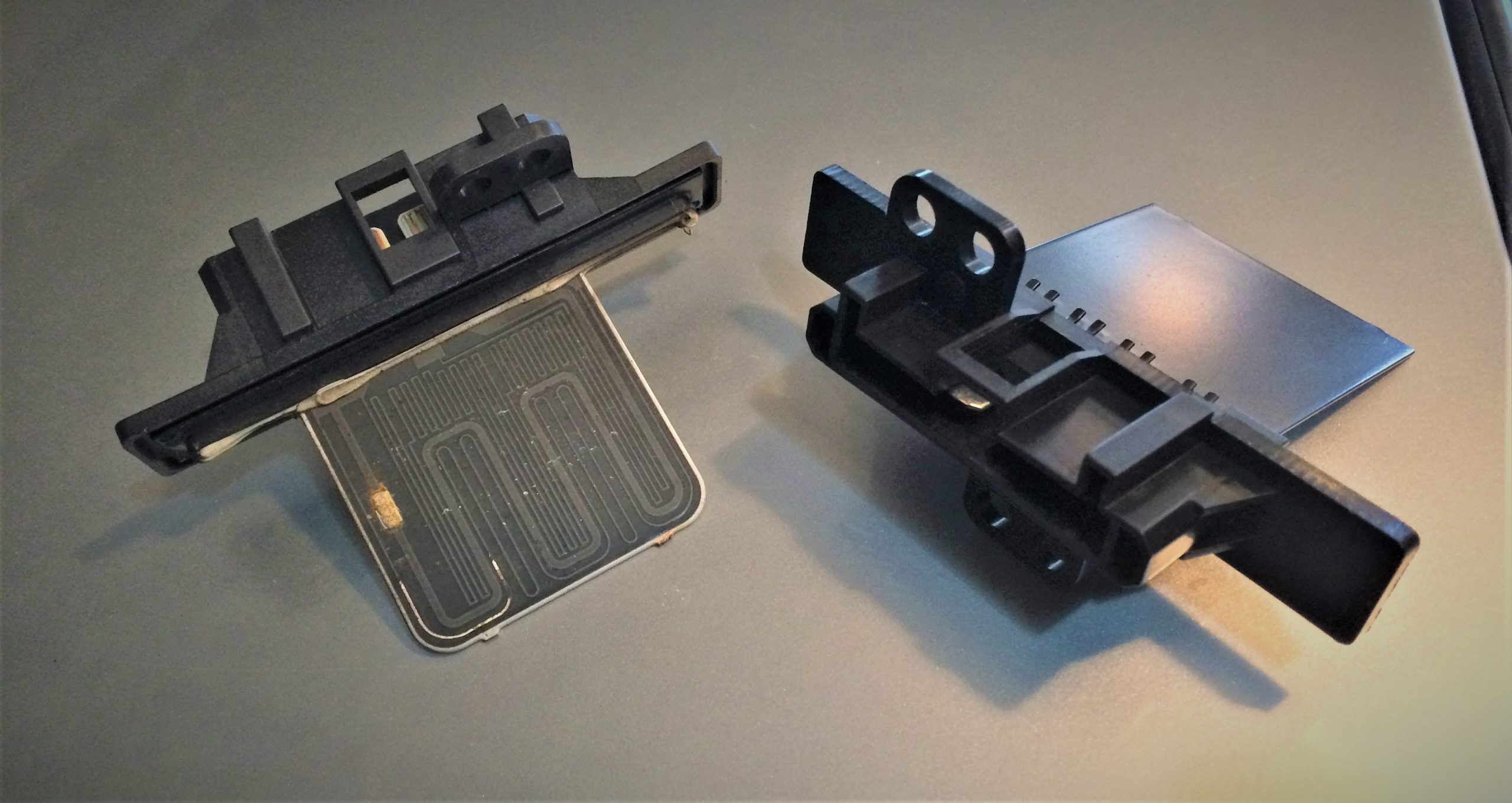
Understanding this difference is the most important step in avoiding the purchase of unnecessary parts.
A Guide to Testing Your Blower Motor Relay
The easiest way to test a blower motor relay is to swap it with an identical, known-good relay from your car (like the horn or fuel pump relay) and see if the fan starts working. This simple trick requires no special tools and can give you a definitive answer in minutes.
Before you begin, a crucial first step: locate the relay. Check your owner’s manual or the diagram on the fuse box lid. They are often found in the main fuse box under the hood or a secondary one under the dashboard.
Safety First: Always disconnect the negative terminal of your car’s battery before handling electrical components like relays and fuses to prevent accidental shorts or injury.
Here are the common methods for testing a suspected bad blower motor relay:
- The Swap Test (Easiest Method): Locate the blower motor relay in your fuse box. Find another relay in the box with the exact same part number and pin configuration (the horn, wipers, or fuel pump relays are often identical). Pull out the suspect relay, replace it with the known-good one, and turn on your fan. If the fan now works, you’ve found your bad relay.
- Visual Inspection: Carefully remove the relay and inspect it. Look for any signs of physical damage, such as a cracked or melted plastic case, burnt or discolored pins, or corrosion on the terminals. Any of these signs are a clear indication the relay needs to be replaced.
- Bench Test with 12V Power: For more advanced users, you can test the relay’s function directly. Using jumper wires, apply 12V power from your car battery to the two trigger pins (often labeled 85 and 86). You should hear a distinct “click” as the internal switch activates.
- Multimeter Test: With the relay activated by a 12V source, use a multimeter set to “continuity” or “resistance” to check the connection between the two load pins (often labeled 30 and 87). You should have near-zero resistance (good continuity). When power is removed, the circuit should be open (infinite resistance).
For most car owners, the swap test is the fastest, safest, and most reliable way to confirm what does the blower motor relay do in a car when it has failed.
To confidently perform these tests and replace a faulty part, having the right components on hand is key. Equipping yourself with a new blower motor relay or a multi-purpose automotive relay kit can simplify your repair and get your climate control back up and running quickly.
FAQs About Blower Motor Relays
Here are direct answers to some of the most frequently asked questions about the blower motor relay and its role in your vehicle’s HVAC system.
What happens when a blower motor relay goes bad?
When a blower motor relay goes bad, it typically fails to send power to the blower motor, resulting in your car’s fan not working at all, working unreliably, or blowing fuses. In most cases, the internal switch simply fails to close, creating an open circuit. This means:
- The blower motor will not turn on at any speed.
- The fan may work intermittently as the internal contacts flicker.
- In some cases, an internal short can cause the associated fuse to blow.
How do I know if my AC fan relay is bad?
A simple test is to start the engine and turn on the air conditioning. If the blower fan doesn’t turn on at all, there’s a strong possibility the relay is bad. The blower motor relay is the same component that controls the fan for both heating and air conditioning. If the fan is completely dead for all functions, the relay is a primary suspect.
What are the symptoms of a bad blower motor resistor?
The classic symptom of a bad blower motor resistor is when your fan only works on the highest speed setting and not on any of the lower ones. This happens because the highest fan setting often bypasses the resistor entirely, sending full power to the motor, while the lower speeds must pass through the resistor to be slowed down.
Can a bad relay cause a fuse to blow?
Yes, a faulty relay can create electrical shorts or excessive current draw, causing the blower motor fuse to blow repeatedly as a protective measure. If a relay fails by shorting its internal coil or contacts, it can create a direct path to ground, drawing far more current than the circuit is designed for and instantly blowing the fuse.
Where is the blower motor relay located?
The blower motor relay is typically located in one of the vehicle’s fuse boxes, either under the hood in the engine bay or inside the cabin under the dashboard. To find the exact location for your specific vehicle, you should always consult:
- Your vehicle’s owner’s manual.
- The diagram printed on the inside of the fuse box cover.
Final Summary: Key Takeaways on Your Blower Motor Relay
Understanding what the blower motor relay does in a car demystifies a common and frustrating automotive problem. This small, inexpensive part serves as a critical high-power switch, and knowing how it works and how it fails can save you time, money, and the discomfort of a broken climate control system. By recognizing the specific symptoms, you are empowered to accurately pinpoint the problem.
Remember these crucial points from this guide to confidently diagnose your HVAC issue:
- The Relay’s Job: It’s an electromagnetic switch that uses a small signal to control the high-power circuit for your car’s fan motor.
- The Telltale Symptom: A completely dead fan that won’t work on any speed is the classic sign of a failed blower motor relay.
- Relay vs. Resistor: Don’t confuse the two. A bad resistor means the fan only works on high speed. A bad relay means the fan doesn’t work at all.
- The Easiest Test: The “swap test” — swapping the suspect relay with a known-good, identical relay from the same fuse box — is the quickest way to confirm a failure.
Use this guide to confidently diagnose your HVAC issue. If you’ve checked these points and are still unsure, or if the problem involves melted wiring, it’s always wise to consult a professional technician for a safe and effective repair.
Last update on 2025-12-28 / Affiliate links / Images from Amazon Product Advertising API

